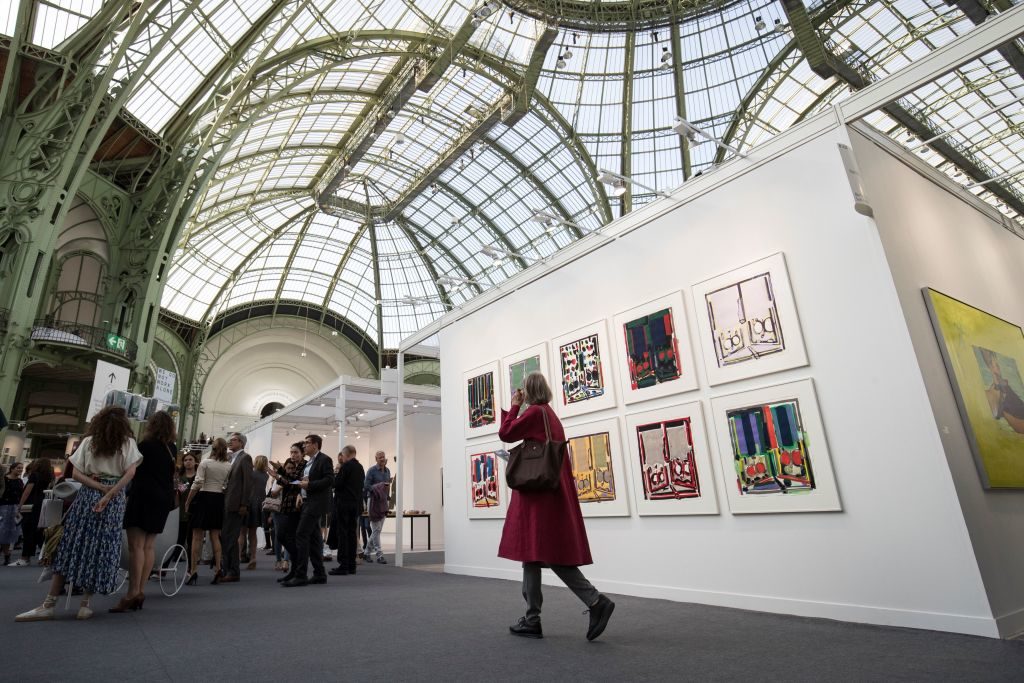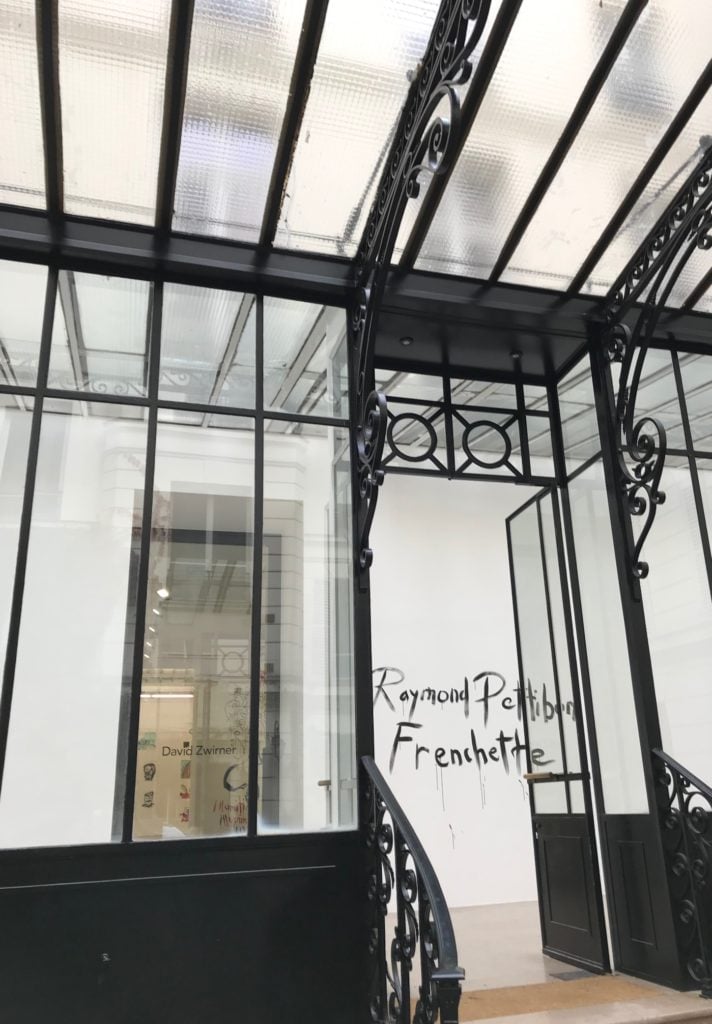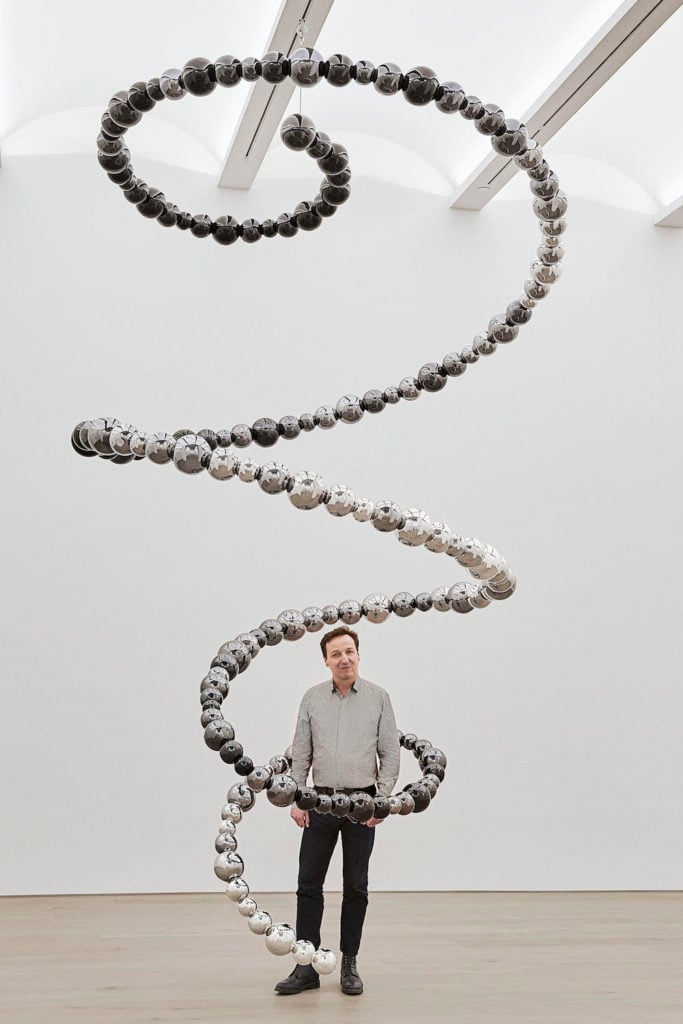Market
Paris Was Emerging as Europe’s Next Big Art-Market Hub. Post-Lockdown, Can It Maintain the Momentum?
French galleries are itching to reopen their doors to the public. But will it make up for lost time?

French galleries are itching to reopen their doors to the public. But will it make up for lost time?

Naomi Rea

In the months preceding the worldwide shutdown—what we have now come to think of as the Before Times—Paris was in the midst of an art-market renaissance. In 2019, galleries including David Zwirner and White Cube opened outposts in the city and France’s auction market grew a remarkable 49 percent, in large part because collectors were consigning more works to Paris-based houses amid Brexit jitters. The city’s central location had become one of its biggest assets in its fight for primacy in the European market.
But amid a two-month lockdown, and with the prospect of limitations on large gatherings and travel extending far into the future, a central location is no longer the asset it used to be. And the current situation has left many wondering whether the crisis could derail Paris’s long-gestating evolution into an art-market hub.
As the city’s galleries and small museums prepare to reopen next week, dealers are determined to keep Paris from losing its edge—even if they have to maintain a five-foot bubble of personal space while they do it. The art dealer Almine Rech tells Artnet News that she will open her Paris space on an appointment-only basis beginning May 11, limiting attendance to 10 people at a time. (She also notes that most clients already asked for appointments, even before the social-distancing era.) Meanwhile, Paris Gallery Weekend announced plans to hold its 2020 edition from July 2 through 5, with 50 participating galleries and a focus on guided tours (masks required).

The outside of David Zwirner Paris. Photo: Nate Freeman.
“Paris is a cluster of art enthusiasts, and people are ready to come back,” says dealer Thaddaeus Ropac, who plans to reopen his gallery in the Marais on May 12. It is notable, he said, that Paris, rather than Austria, where he also has a space, is leading the way with reopening given Austria’s lower infection rate. But it also has the potential to help the city’s scene bounce back quicker.
The stakes are high, and not every art business will survive. A shocking report released last month by the Comité Professionnel des Galeries d’Art warned that up to a third of French galleries might be forced to close because of the crisis. French galleries, the report noted, also expect to lose more than $200 million in revenue by June. Plus, because 85 percent of the member art galleries are small businesses whose turnover directly depends on collector behavior, they will be hit hard if the economic crisis hits their clients’ bank accounts for an extended period.
The head of the committee, dealer Marion Papillon, tells Artnet News that previous crises in the ‘90s and 2008 have shown that it can take a long time for the art market to recover. While Papillon says that as of yet none of her members have been forced to close, their future is far from assured. “Forty-six percent of galleries closed between 1992 and 1995,” she says.
Larger galleries are also not immune to the squeeze. Since closing his five spaces, Thaddaeus Ropac says he has had to cut hours and pay for some of his team, although with galleries reopening, he is actively starting to restore their jobs.
With eight exhibitions in storage, the closures have also effectively altered the next two years of the gallery’s exhibition program—and the artists who rely on it for income. While the gallery has been making sales from its online viewing room and virtual art fairs, Ropac says that “after two months of this virtual space, we are longing to go back to the real thing.”

An unusually empty square in front of the Louvre museum during Paris’s lockdown. Photo by Frédéric Soltan/Corbis via Getty Images.
The French government has offered some supplemental aid, setting up a €22 million relief fund for culture at the beginning of the crisis, with €2 million set aside specifically for the arts. But many have warned that this will not be enough to ensure galleries’ survival. After a consultation with cultural representatives, president Macron announced on Wednesday, May 6, that additional relief would be made available for the country’s arts and culture sectors as part of a special €7 billion fund for small businesses and independent workers.
Despite the challenges, however, some galleries have found that clients are reaching into their pockets to support their work. Nathalie Obadia, who plans to reopen both her Paris galleries on May 11, says there was an “almost immediate” halt in sales after the gallery shuttered in mid-March. But for the past week, exchanges with both French and foreign collectors have reignited. “The presence of the gallery through social networks has made it possible to maintain links, but it is time that collectors can come to the gallery to see works, especially since this cannot be done at fairs,” she says.
Dealer Kamel Mennour will reopen his three Paris spaces from May 12, and is forging ahead with plans to open a fourth in October. Staff will likely work in shifts to limit the number of people in each gallery at once. Although he has successfully transferred gallery operations online, Mennour said closing the galleries was “brutal.”

Emmanuel Perrotin. Photograph by Guillaume Ziccarelli, Courtesy Perrotin.
Meanwhile, Galerie Templon will reopen both its spaces in Paris on May 11, allowing 20 people in the gallery at once. Its first opening post-lockdown is for a show of work by Japanese artist Chiharu Shiota on May 30. In lieu of the usual party and opening dinner, the gallery will offer extended opening hours to avoid a crush of visitors.
“The economic consequences are yet to be fully evaluated,” Daniel Templon tells Artnet News. “Clearly with the closing of the gallery to the public and the cancellation of fairs, our sales dropped in April, but we remain optimistic.” The dealer adds that despite opening the gallery’s Billie Zangewa exhibition on the day the lockdown was announced, it has already sold out. Meanwhile, half its Norbert Bisky exhibition sold before the show’s opening at prices ranging from €50,000 to €60,000 and several works from the upcoming Shiota exhibition have also found buyers for €30,000 to €40,000 each.
In an effort to support the city’s dynamic gallery ecosystem, some larger outfits are also opening up their spaces to smaller counterparts. Perrotin, for example, will be hosting a “solidarity exhibition” in its Saint Claude gallery from May 23 through August 24, inviting 26 local dealers to show their artists’ work in four two-week-long group shows. Ropac has promised to open up his Pantin space to smaller dealers as well.
Despite these concerns, dealers are confident that Paris will retain the market momentum it had gained prior to the crisis. “We’re going to have to reinvent things a little bit, but Paris today is a very strong, dynamic city, thanks to its museums, to the private foundations that are opening, to high quality fairs, and its very important and dynamic network of homegrown and international galleries,” Papillon, the head of the Comité Professionnel des Galeries d’Art, says. “I hope we will succeed in maintaining this dynamism. Reopening was a fundamental first step, but we will have to mobilize our buyers.”